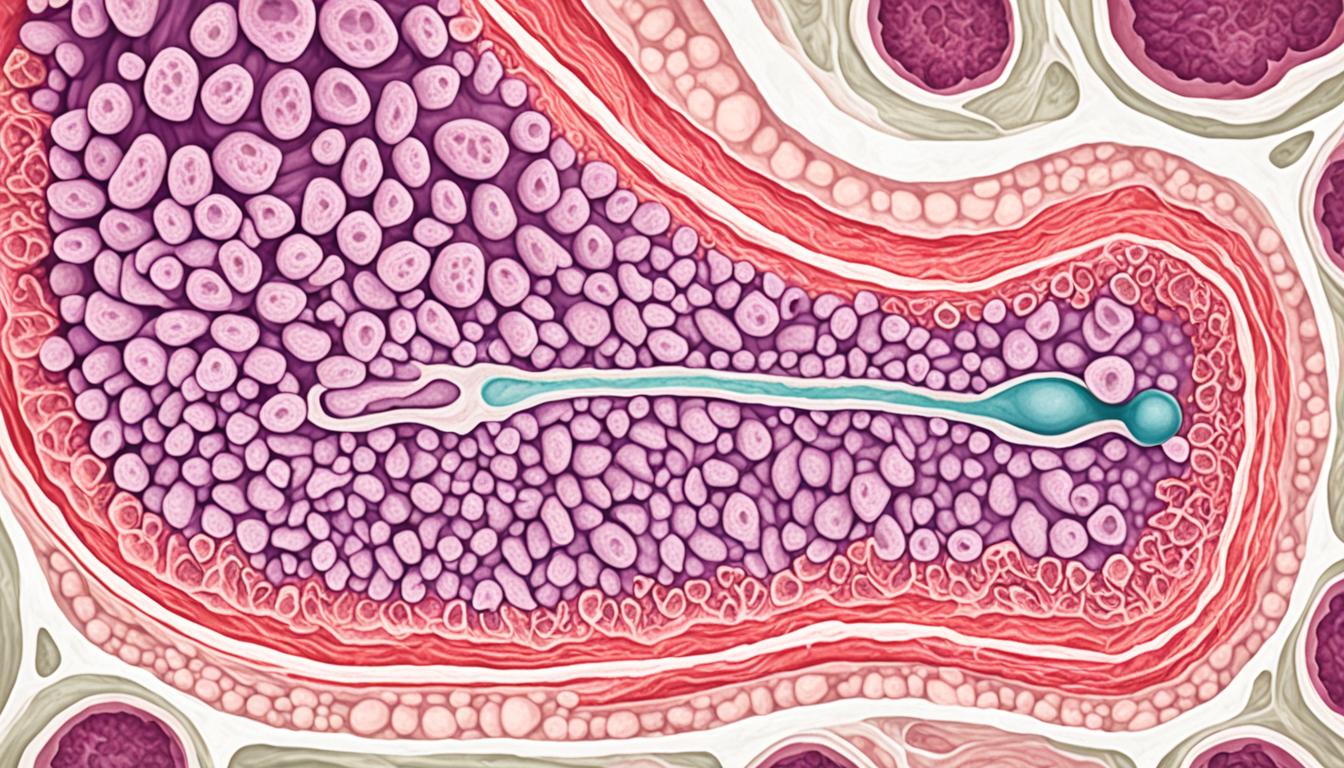Uterine myoma, or uterine fibroids, is very common among women of reproductive age. These benign tumors grow within the uterus muscle. They can be as small as a seed or as big as a melon. Most women with these fibroids don’t have any symptoms, but those who do might feel intense pain or pressure in their pelvic area.
Heavy, long-lasting periods, a bigger belly, and pain during sex are also common symptoms. Although we’re not sure what exactly causes fibroids, we think genetic changes, hormones, and issues with the extracellular matrix might play a part.
Key Takeaways:
- Uterine myoma, also known as uterine fibroids, is a common condition in women of reproductive age.
- These benign tumors develop within the muscle tissue of the uterus and can range in size.
- Common symptoms of uterine fibroids include pelvic pain, heavy menstrual periods, an enlarged abdomen, and pain during sexual intercourse.
- The cause of uterine fibroids is unknown, but genetic changes, hormonal influences, and ECM abnormalities may contribute.
- Treatment options for uterine fibroids include medication, surgical procedures like myomectomy or hysterectomy, non-surgical procedures, and stem cell therapy.
Diagnosis and Treatment Options for Uterine Myoma
Uterine fibroids need accurate diagnosis and the right treatment for effective management. They are also known as uterine myomas. Different techniques and tests are used for diagnosis.
Uterine Fibroid Diagnosis
Healthcare providers begin with a pelvic exam. This helps assess the uterus’s size, shape, and position. They look for any signs that might indicate fibroids.
Doctors might suggest imaging tests to study the fibroids further and plan treatment.
- Ultrasound: It provides a detailed image of the fibroids. The test shows their size, number, and where they are in the uterus.
- Magnetic Resonance Imaging (MRI): An MRI gives even more detailed pictures. These images help identify the exact location and features of the fibroids.
- Hysteroscopy: A hysteroscope is used to see inside the uterus. It’s put in through the vagina and cervix. This allows doctors to observe the fibroids closely.
Results from these tests help create a personalized treatment plan for each patient.
Treatment Options for Uterine Myoma
The right treatment depends on many things, like age and desire for children. The aim is to reduce symptoms, keep fertility if wanted, and enhance life quality.
Medication: Medicines can help manage symptoms and reduce fibroid size. Hormonal drugs like GnRH agonists or progestins are commonly used. They can lessen bleeding, pain, and temporarily shrink the fibroids.
Surgical Procedures: Severe cases or those not wanting more children may need surgery. Two main surgeries for fibroids are:
- Myomectomy Surgery: It removes the fibroids but keeps the uterus. The surgery can be open, through the belly, or minimally invasive with tools.
- Hysterectomy: This surgery removes the uterus. It’s suggested for those not wanting children or with very severe symptoms not helped by other methods.
Non-Surgical Procedures: For those who prefer not to have surgery or want to keep their fertility, non-surgical options exist. Some are:
- Uterine Artery Embolization (UAE): UAE blocks fibroids’ blood supply, causing them to shrink. It’s done by interventional radiologists.
- MRI-Guided Focused Ultrasound Therapy: This therapy uses focused ultrasound waves to destroy fibroids. It doesn’t require any cuts.
Stem Cell Therapy: Stem cell therapy is a new area of research for fibroids. It includes injecting stem cells into fibroids. This might reduce their size and prevent regrowth. While still being studied, it could be an option in the future.
Women with fibroids should talk to their doctors. They can discuss which treatment is best for their situation and preferences.
Advancements in the Treatment of Uterine Myoma in Thailand
Thailand leads in treating uterine myoma with advanced methods, including the latest in stem cell therapy. Skilled doctors in obstetrics and gynecology offer a variety of treatments. These range from medicine to modern methods like fibroid embolization. They also include using stem cells to treat fibroids.
Stem cell therapy in Thailand marks a major step forward over surgery. This innovative method uses stem cells to reduce fibroids without surgery. It’s a new, less risky way that aims to heal patients. Thailand’s facilities and experts in this field are at the forefront of this new type of treatment.
Fibroid patients in Thailand enjoy a top-notch healthcare system. Here, they can get the best care, with treatment plans tailored just for them. This could mean exploring methods that don’t require surgery, or opting for the latest in stem cell therapy.

